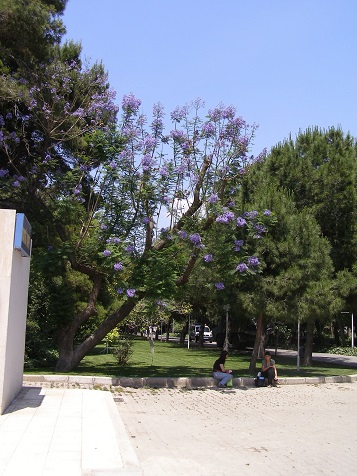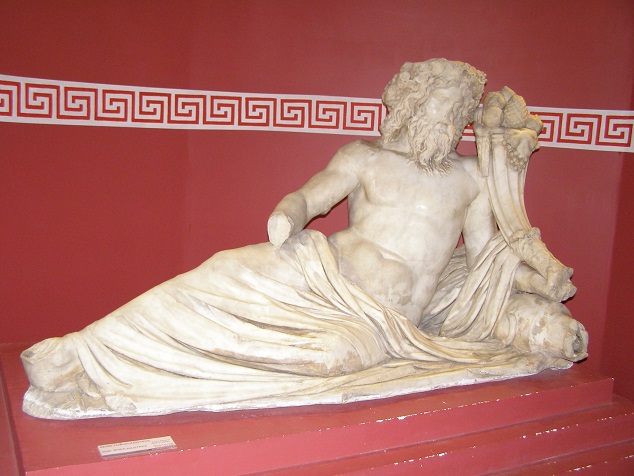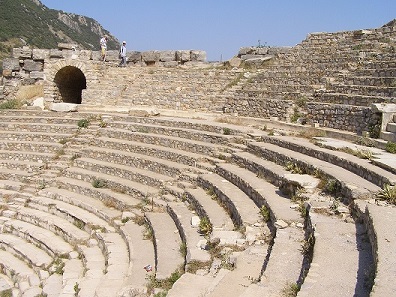The tale of the refugee describes the Greek Nation from the Fall of Constantinople till the 1821 Greek Revolution. “For a good man to leave his city, his rich fields and go a-begging is of all things the most miserable. Wandering with mother dear and aged father with little children and wedded wife. For hateful shall such an one be among all those to whom he be among, all those to whom he shall come in bondage, to want loathsome penury (poverty) and doth shame to his lineage and belie his noble beauty followed by all evil and dishonor,” – ancient Greek poet Tyrtaeus.1
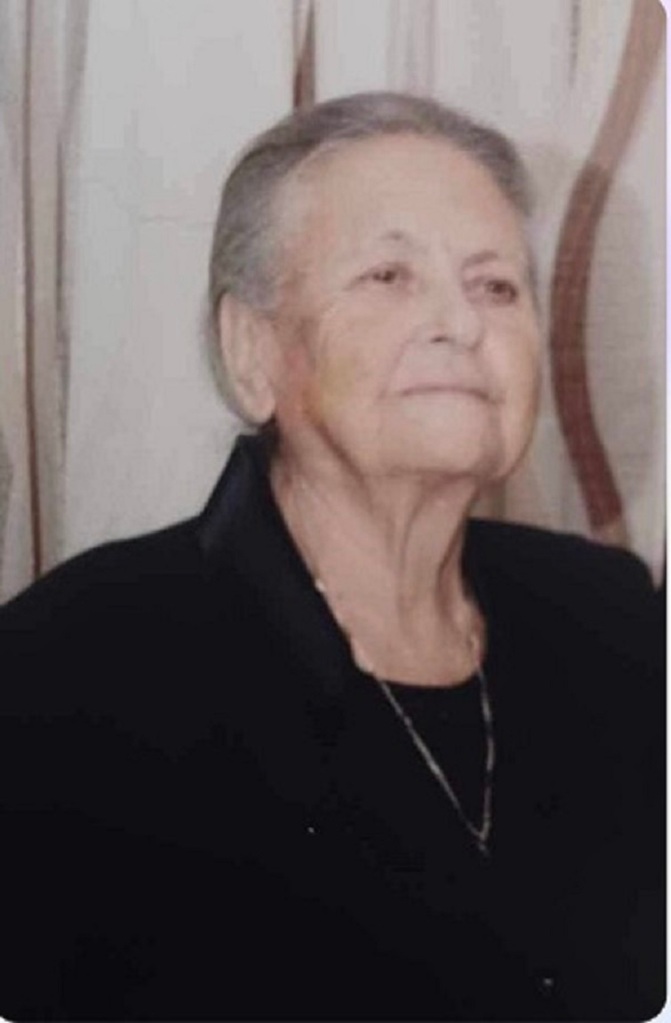
The late Apostolia Papadopoulou.
Exile, a person without a country was the life of a Greek. But it was more bitter for the vast and less fortunate majority of Greeks from the conquered Byzantine Empire. Victor Davis Hanson, Classicist, military historian, and political commentator explained the horrific treatment of Greeks and Armenians who experienced genocide under Ottoman rule. “Greeks experienced from 1453 with the Fall of Constantinople, 400 years of Ottoman rule that ended in horrific treatment in Smyrna 1922,” he said.2
Dr. Isaak Papadopoulos, Assistant Professor of Pedagogy and Literacy Department of Early Childhood Education and Care at the International Hellenic University Thessaloniki, Alexander Campus in Sindos, related the amazing story of his late grandmother, Apostolia Papadopoulou, who passed away in October 2023. Mrs. Papadopoulou was “ a remarkable individual whose roots traced back to the rich cultural tapestry of Asia Minor. She passed away at the age of 86, leaving behind a legacy deeply intertwined with the heritage and traditions of her ancestors. Apostolia Papadopoulou was not only a guardian of her family’s cultural heritage, but also a beloved grandmother.” She inspired Dr. Isaak Papadopoulos to be a scholar, contributing to the perpetuation of the culture of the Greek community of Asia Minor/Western Anatolia. Grandparents inspire their grandchildren to remember their family’s roots.
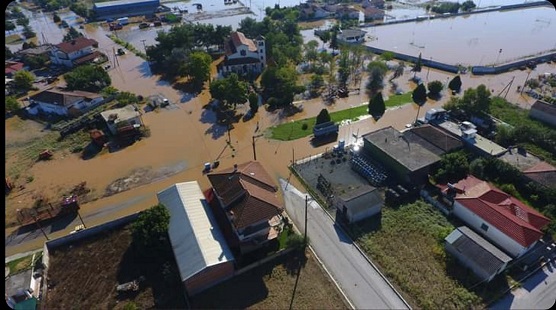
Flooded Omorfohori, September 2023
“Her life’s work revolved around preserving the traditional way of life of the Asia Minor people,” explained Dr. Papadopoulos. “She did so from the heart of Omorfochori in Larissa, Greece. Apostolia Papadopoulou’s story is a testament to the resilience and tenacity of the Greek people who, over the centuries, endured challenges and upheavals while preserving their unique cultural identity. Born to a family with roots in Asia Minor, Apostolia was deeply connected to a heritage that was rich in traditions, cuisine, music, and language. Her ancestors had once called Asia Minor home until the population exchange of 1923, when they were forced to leave their ancestral land and make Greece their new home.”
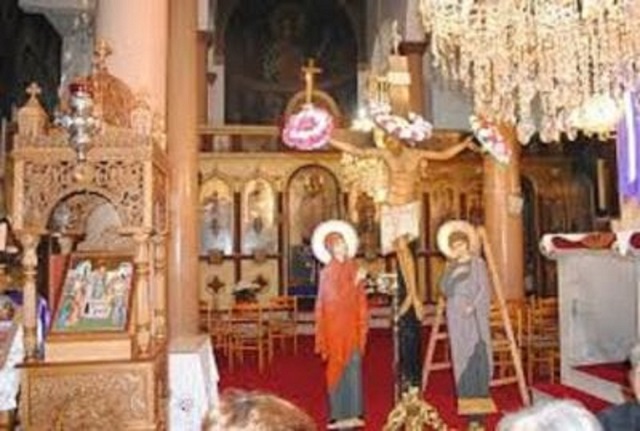
– Agios Giorgo, before the flood
“Apostolia’s life unfolded in the charming village of Omorfochori, nestled in the region of Larissa, Greece,” said Professor Papadopoulos. “Here, she dedicated herself to preserving the traditional way of life and customs of the Asia Minor people. Omorfochori became a haven for those who sought refuge from the turbulent times of the early 20th century. It was within this picturesque village that Apostolia’s unwavering commitment to her roots came to life.
She was a guardian of the traditional cuisine, cooking up recipes passed down through generations, ensuring that the flavors of Asia Minor were not lost to time. Her kitchen was a place where generations gathered to savor the culinary delights of her ancestors, sharing stories and bonding over the meals that connected them to their past. Apostolia Papadopoulou’s legacy extended beyond her preservation of cultural traditions.” Her grandson, Dr. Isaak Papadopoulos, inherited her passion for preserving their family’s heritage. Together, they continued to document and share the stories, songs, and recipes that had been passed down through the generations. Her dedication to preserving the traditions, flavors, and sounds of her ancestors ensured that the legacy of Asia Minor lives on in the hearts and minds of those who knew her and the generations to come. Her life’s work in the charming village of Omorfochori in Larissa, Greece, serves as a shining example of the enduring power of cultural heritage and the profound impact one person can have in preserving it.
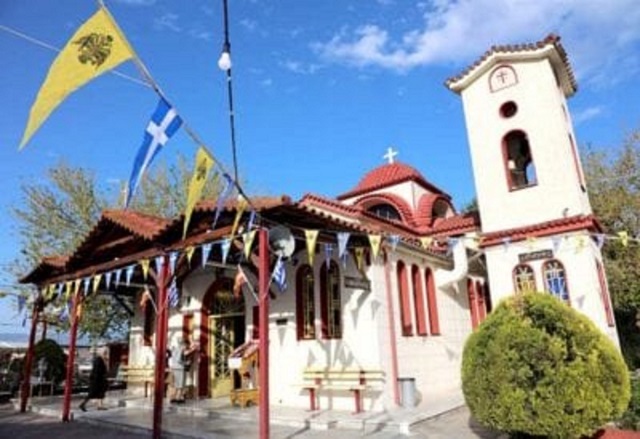
Sts. Raphael and Nicholas before the flood
They did not have cell phones, no welfare, food stamps, free lunches, medical care, or advocacy groups trying to help them. The Western Anatolia refugees were from the business, maritime and education communities, The 1922 refugees of the Greek Genocide of Asia Minor in Western Anatolia, were destroyed by Western Powers, who dismembered the Ottoman Empire by using ultra nationalistic groups. They came to Greece, traumatized with Greek Orthodox icons. “Unwelcomed,” said Scholar Efrosini Mancini of a Constantinople Family with Phanariot roots (Greek ruling class of Ottoman Empire). “No one wanted the 1923 refugees.” Called “”tourkospori” or “seeds of the Turks”, they came to Greece with their knowledge of Greek language, civilization, and Greek Orthodoxy.
I met Dr. Isaak from a workshop hosted by the Greek teachers Association “Prometheus”. His research shows the Asia Minor refugees built churches and schools, transforming their area. “My village was named “Nechali” as there were only some native people there when refugees from Asia Minor came,” explained Dr. Isaak. “They created a new village just next to Nechali and they renamed it ‘Omorfochori’, My great grandmother told me that when she came to Greece, she felt really sad. She was afraid because of the unknown. They came to Omorfochori. They were given a small building for a house and a cow. They tried to survive. They did it because they were very hard working.”
“Naturally, the refugees focused on two key factors: religion and education., explained Dr. Isaak. “The religious faith of the people of Asia Minor was great. There was a chapel in almost every house. They also showed great reverence during the holidays as most of them fasted, especially on Wednesdays and Fridays. Priests were also respected and loved like their parents. Respect for the elders was the main element then. The metropolis of the village was the church of Agios Athanasios… Agios Charalambos in Hassambali, Ascension Church on Mount Mopsio and the church of Agios Georgios, in the center of the present village.
Omorfohori, the village that Mrs. Apostolia Papadopoulou was destroyed at the end of her life in September 2023. Hurricane Daniel destroyed Magnesia, Karditsa, Larissa and Central Greece was s destroyed by rains, floods, and rising waters of the Pineios river. Palamas, Omorfohori and other villages have vanished under floods and mud. Dr. Papadopoulos believes “Though the Floodwaters have changed the landscape of our lives, they can never wash away the spirit of our community. We may be scattered, but we remain united in our hearts.”4

Consul General of Greece in New York Konstantinos Konstantinou, explained on October, 20, 2023 at radio host/journalist Dimitris Filippidis program that “an exhibition of the Asia Minor Catastrophe will be held from November through December. All that happened in Western Anatolia is part of the Greek nation’s history. This must be kept alive. Our youth must remember who and what we are. Grandchildren must learn about their grandparents lives and history in Asia Minor.who and what we are.
Mrs. Apostolia Papadopoulous’ legacy is in the hearts of the persons who enjoyed her culture stories with her Asia Minor cuisine. “What you leave behind is not what is engraved in stone monuments, but what is woven into the lives of others.”- Pericles.
All photos by Dr. Isaak Papadopoulos.
References:
- https://www.greeknewsusa.com/remembering-the-200th-anniversary-of-greece-independence-the-origins-of-the-greek-nation/
- https://victorhanson.com/the-origins-of-war-in-gaza/
- https://greekamericanexperience.wordpress.com/2020/10/23/what-happened-to-the-survivors-of-the-1923-asia-minor-catastrophe/
- https://hellenicnews.com/greece-2023-thessaly-destruction/
Photos:
Photo 1- The late Apostolia Papadopoulou with grandson Dr. Isaak Papadopoulos
Photo 2- Flooded Omorfohori, September 2023
Photo 3- Agios Giorgos, before the flood
Photo4- Sts. Raphael and Nicholas before the flood
Photo5- September 9th Omorfohori.

